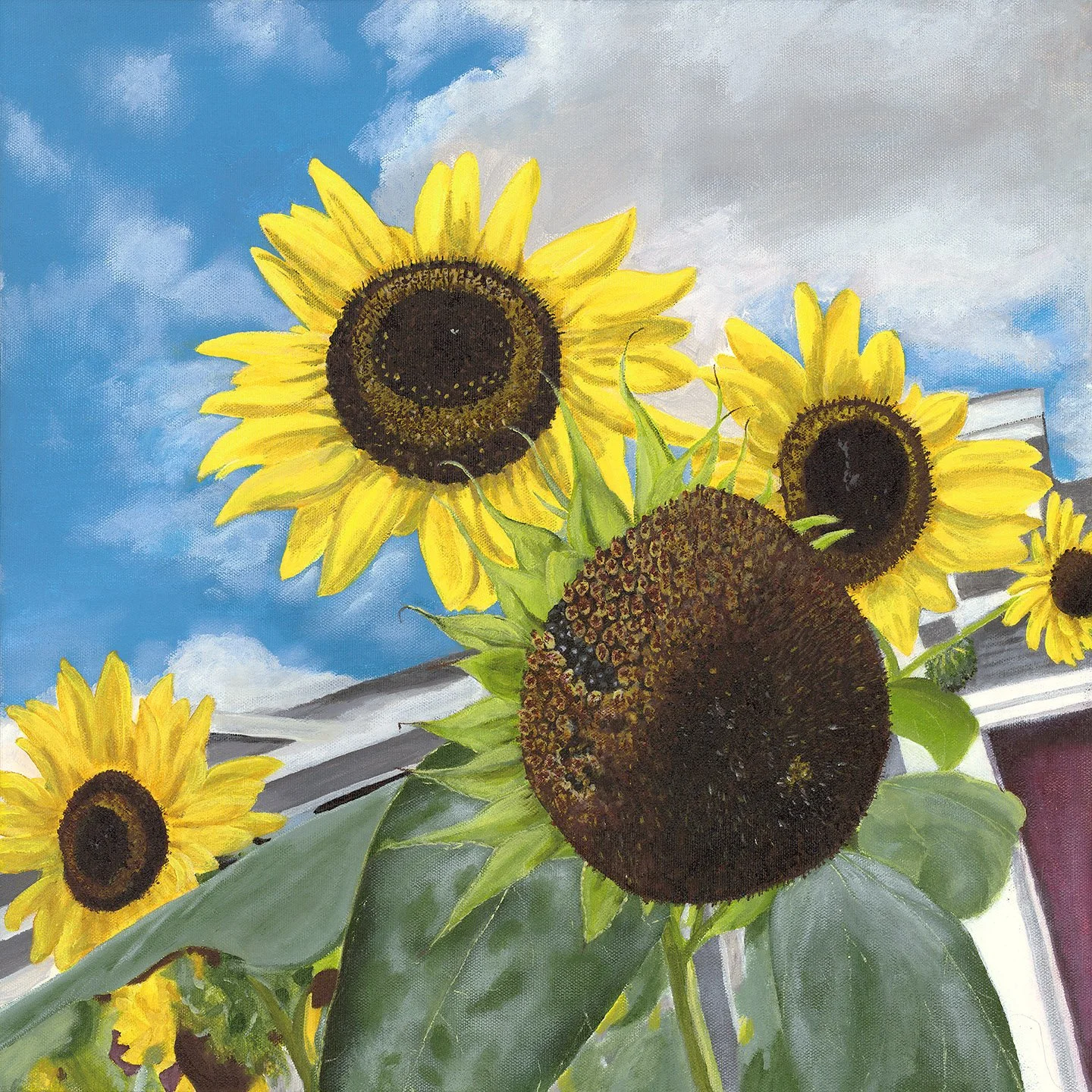Anticipation of dawn.
“Sol Flower” 20 x 20, Acrylic on canvas | Jen Day
Nothing grabs my attention more so than a field of Sunflowers. This must be what it feels like to be a bee. And it’s not like they are hard to miss.
While walking around Fish Creek, WI, one turn of my head and this field in the distance caught my eye. My journey to the right quickly turned to a journey to the left, my families voices fading in the distance as I hear “hey, where are you going?…Jen?” But there was no stopping me, so they grudgingly followed my lead. There is something about standing among these giants of all flowers, as if you want to experience their collective sway and attention towards the sun, almost as if they are reminding you to stop and soak it in.
There were plenty of pictures taken that day, some head shot portraits of a few handsome ones, some wider angle shots showing how many were in attendance to the Sun Show, and this one, which served as my subject of this painting. There was a charming barn near the edge of the field that served as a good contrast backdrop to the flowers bright faces. The upward facing angle to accentuate their towering gaze, I thought this was a great composition.
Nature has always fascinated me, with sunflowers being one of the more intriguing fascinations. They move with the sun! I’ve always wondered why and how, and maybe at one time I was taught the why’s and how’s in elementary school, but now you're asking a lot for me to remember that far back. So to google I go.
It turns out, Scientists have answered a burning question central to the charm of sunflowers: Why do young flowers move their blooms to always face the sun over the course of a day? Researchers say the young plant's sun-tracking (also called heliotropism) can be explained by circadian rhythms – the behavioral changes tied to an internal clock that humans also have, which follow a roughly 24 hour cycle. A young flower faces east at dawn and greets the sun, then slowly turns west as the sun moves across the sky. During the night, it slowly turns back east to begin the cycle again. The plant's turning is actually a result of different sides of the stem elongating at different times of day. Older sunflowers eventually just stay facing the east to save the efforts of their aging bones. Well, that’s the how, but what about the why? It’s actually a simple answer…Bees like warm flowers. And the fact that sunflowers know this and move to achieve this BLOWS MY MIND!
It kind of makes me question the possibility that plants, and not just sunflowers, have a collective intelligence. Going down my google rabbit hole on this subject, there are many instances like this in nature. Did you know that different species of coral in the same area, spawn at different hours of the same day, but like species that are separated from one another at a distance (sometimes even across the globe) spawn at the same time as their species elsewhere? Ok, this rabbit hole is freaking me out. I encourage you to find your own rabbit holes around this subject, you’ll thank me later.
So, next time you see a sunflower, say hello…they might just be listening.

